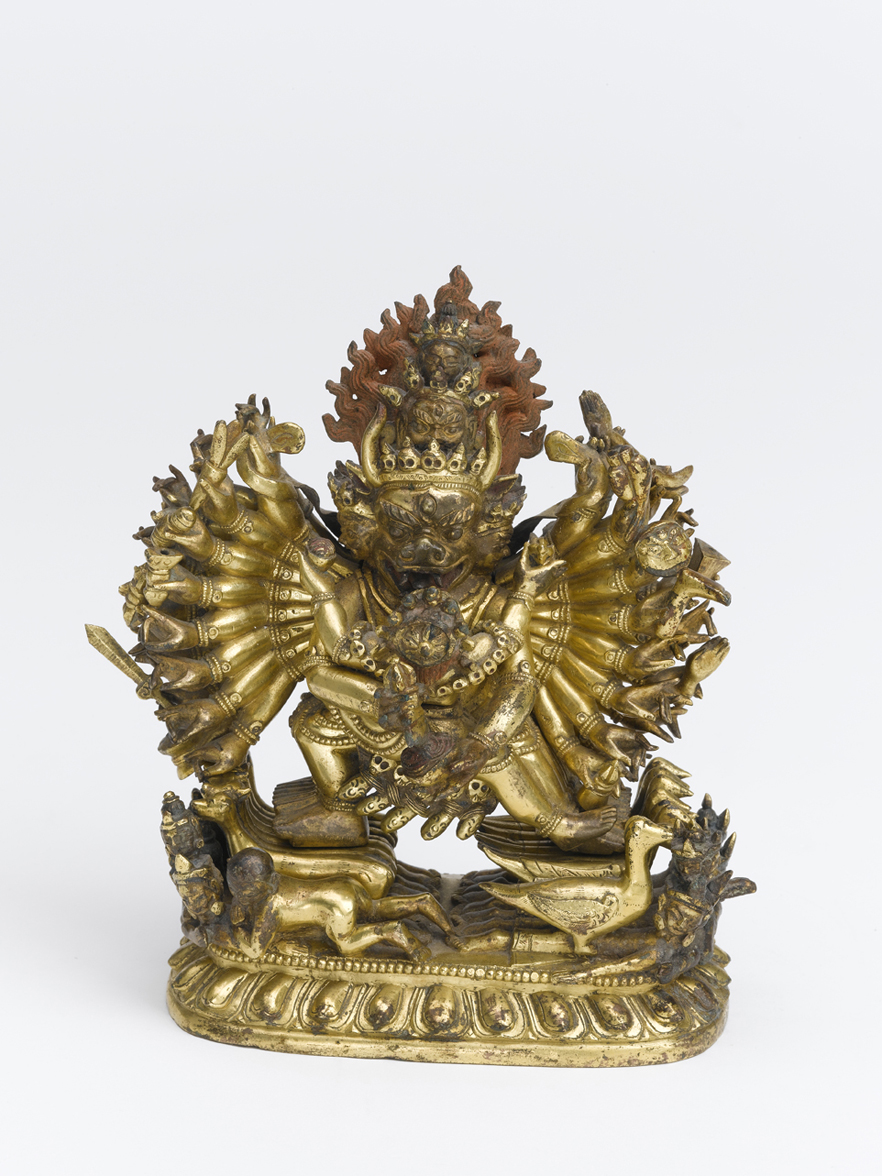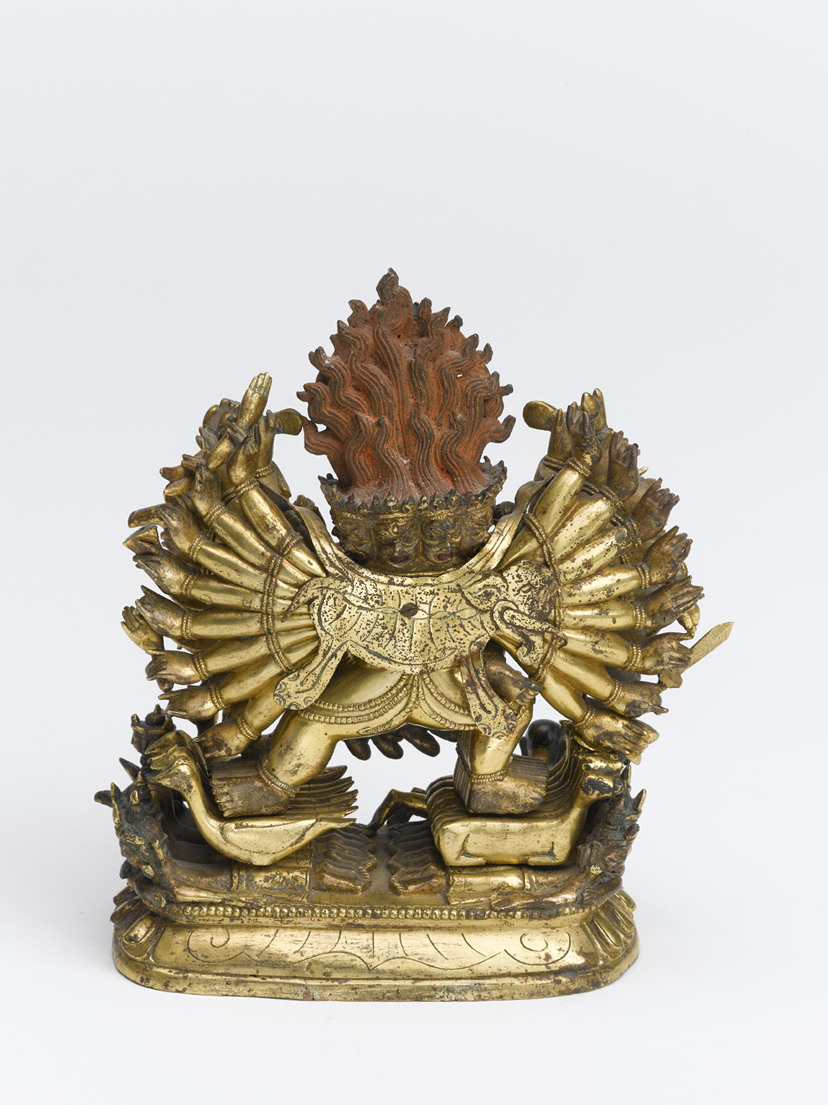|
|
«« go back
Yamantaka (Vajrabhairava)
"wrathful manifestation of Manjusri, the Bodhisattva of Wisdom"
Sino-Tibetan - Gilded copper alloy with polychrome pigments - height 18.2cm - L. 16cm - D. 9.5cm - 17th century
Nicely detailed in perfect condition. Strong fearful expression.
Vajrabhairava is a wrathful manifestation of Manjusri, the Bodhisattva of Wisdom. His is the enduring, adamantine wisdom of ultimate reality which triumphs over suffering and death.
He is known also as Yamantaka because he is the conqueror of Yama, the Lord of Death, who appears with the face of a buffalo. Of Vajrabhairava's nine heads, the central one is that of the buffalo, symbolic of his defeat over Yama. The top-most head is that of Manjusri himself. Because of his manifold power Vajrabhairava was called upon to oppose all enemies of the doctrine, to keep the uninitiated away from the tantras.
In his thirty-four arms Vajrabhairava bears symbols of the thirty-four elements of highest enlightenment. In his principal right and left hands he holds the flaying knife and the kapala, a skull cup filled with blood.
A freshly flayed elephant skin, symbolic of vanquished ignorance, is held in his upper-most pair of hands. Bluish-black in color, Vajrabhairava stands in an aura of flame and with the might of his sixteen legs he tramples upon the enemies of Buddhist doctrine. The garland of freshly severed heads around his neck is a sign that he has overcome egotistic instincts. Although sometimes represented as a Solitary Hero, here Vajrabhairava is shown with his consort Vajravetalia, and their union is the coming together of wisdom and compassion from which enlightenment is born.
Vajrabhairava is one of the most important transformative deities of the Gelukpa sect and is especially closely connected with Tsong-kha-pa, the founder of the Gelukpa lineage. Provenience: Collection of Dr. Emil Hultmark 1930
member of the small and exclusive group “Kina Klubben”
Stockholm ( Swedish)
purchased before 1970 ALC (Free circulation )
|







